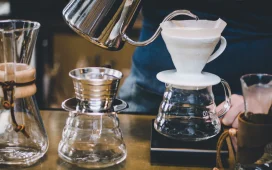Cotton candy is a carnival classic and one of the most recognizable circus and fair snacks. Most people know cotton candy is nothing more than spun sugar with added colour. That doesn’t stop it from becoming incredibly popular.
It’s light, yet it tastes significantly sweeter and more substantial than other sugary snacks. B by spinning a small amount of sugar through a machine and introducing air into the mix, you can make cotton candy. You can now get it in the grocery store for any occasion. And here are some intriguing facts about it that you may not be aware of.
An Industrial Revolution Product
Caramelised sugar is spun through a centrifuge to produce cotton candy containing more than 50% air. The most notable example is that 1899 wasn’t feasible until the early 20th century. The development of the cotton candy machines of this era began only after technical advancements that were made possible by dentist William J. Morrison and candy producer John C. Warton to invest in the patent.
The pan-over-fire method was previously employed to make cotton candy. The fairy floss was produced by Warton and Morrison’s machine using just air and power. And as a result, the abrupt technical advancements in the late 19th and early 20th centuries allowed for the creation of the structure, texture, and design.
Cotton Candy’s Magical Name
Suppose you leave the United States and go to a fair in another country. In that case, they may still call it “fairy floss,” intended to remind people of enchantment, especially as they watched cotton candy being created. The tiny, delicate-looking sugar fibres then clumped together to form a fluffy ball that resembles a cloud. It was like seeing a magic trick.
Until recently, the name clung like sugar threads, particularly in Australia, Finland, and Norway.
It’s an Amazing Science Project for Kids
What better way to introduce science to kids than with cotton candy? There are three fundamental methods of preparing the sugar before it is heated and spun;
- Lay out the sugar and roll it in a food colouring agent.
- Dry will work best since the chemical makeup of water changes when sugar is added. This causes the sugar to dissolve and makes it more challenging to deal with.
- Pre-coloured sugar is available online or at most party supply stores. You may also add the colour and sugar to the machine individually. This is a simple procedure, although it does not always result in a consistent colour.
The melting point of sugar is 190 degrees Fahrenheit. A heating element is housed within the reservoir. You’ll come across something resembling the coils of a toaster. The melted, coloured sugar is then drawn through tiny holes in the reservoir as the machine’s exterior pan spins. The centrifugal force pulls the cotton candy away from the machine’s sides.
Isn’t this fun for the kids and for you too? Cotton candy isn’t only a sweet treat but scientifically teaches us about centrifugal force. So, if you’re ready to get educated or simply enjoy some delicious pink fairy floss, click here.















